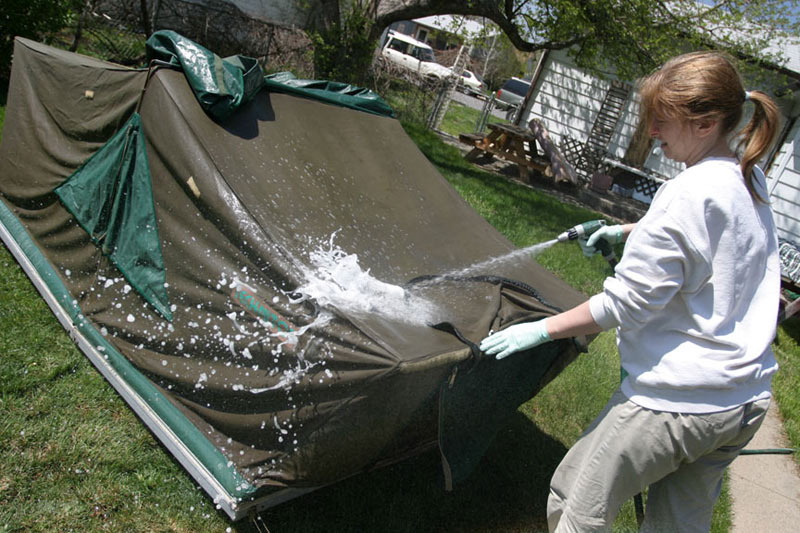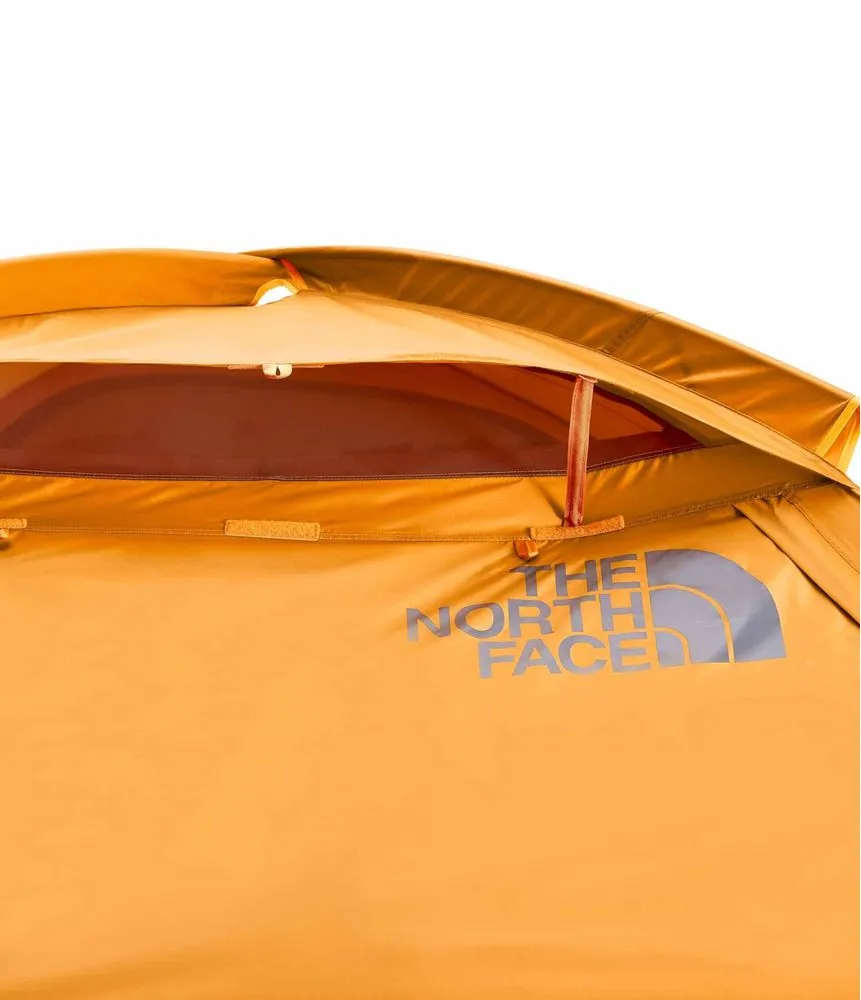I. Introduction

A. The importance of cleaning tent canvas for maintenance and longevity
Keeping your tent canvas clean is crucial for ensuring its longevity and performance. Regular cleaning not only helps to remove dirt and stains but also prevents the growth of mold and mildew, which can damage the fabric. Furthermore, a clean tent contributes to a more pleasant camping experience by preventing odors and preserving the overall quality of the canvas.
B. Benefits of a clean tent, including better performance and odor prevention
A clean tent performs better in various weather conditions. Dirt and debris can clog the pores of the fabric, affecting its breathability and waterproofing abilities. By keeping the tent canvas clean, you can ensure optimal airflow and effective water resistance. Additionally, a clean tent is less likely to develop unpleasant odors caused by bacteria or trapped moisture.
II. Preparing to Clean Your Tent Canvas
A. Assessing the condition of the tent
Before cleaning, thoroughly inspect your tent canvas for any damage or areas that need special attention. Check for tears, holes, or weakened seams that may require repair. This assessment will help you determine the appropriate cleaning methods and products to use.
B. Gathering the necessary cleaning supplies
To clean your tent canvas, you will need a few essential supplies. These may include:
- Mild soap or specialized tent cleaner: Choose a gentle detergent specifically formulated for outdoor fabrics, or opt for a mild soap like dish soap or castile soap.
- Soft-bristled brush: A brush with soft bristles will help remove dirt and stains without damaging the fabric.
- Sponge or cloth: Use a soft sponge or cloth for washing and spot cleaning the canvas.
- Water source: Whether using a hose or a bucket of water, ensure you have a readily available source for rinsing the tent.
:max_bytes(150000):strip_icc()/how-to-clean-a-tent-4788315-07-ba9e6f9af65e46729e51567a44a7fe87.jpg)
III. Cleaning Methods for Tent Canvas
A. Spot cleaning Spot cleaning is ideal for addressing specific stains or areas of dirt on the tent canvas.
- Identify and treat specific stains or spots: Gently blot the stained area with a sponge or cloth soaked in a mixture of mild soap and water. Avoid vigorous scrubbing, as it may damage the fabric. Rinse thoroughly with clean water.
- Use mild soap or specialized tent cleaner: Follow the instructions provided with the cleaner, ensuring that you dilute it properly and apply it only to the stained area. Rinse thoroughly afterward.
B. Hand-washing the entire tent Hand-washing the entire tent is the most common method of deep cleaning tent canvas.
- Set-up and pre-treatment: Find a suitable area where you can set up your tent for cleaning. Remove any loose dirt and debris from the tent by gently brushing or shaking it off. Set up the tent and make sure all zippers and doors are opened.
- Proper washing techniques: Fill a bucket or basin with water and add a mild soap or specialized tent cleaner. Dip a soft brush or sponge into the soapy water and scrub the entire tent, paying extra attention to heavily soiled areas. Use gentle, circular motions and avoid excessive force. Rinse off the soap completely.
- Rinsing and drying: Thoroughly rinse the tent with clean water, ensuring that no soap residue remains. Hang the tent to dry in a well-ventilated area away from direct sunlight, allowing it to fully air dry before packing it away.
C. Machine-washing the tent (if applicable) Machine-washing is suitable for certain types of tent canvas, such as those made of polyester or nylon.
- Necessary precautions and considerations: Consult the manufacturer’s instructions or label to determine if your tent is machine-washable. If so, remove all detachable parts, such as poles and stakes. Place the tent in a large mesh bag or pillowcase to protect it during the wash cycle.
- Selecting a gentle cycle and appropriate detergent: Set the washing machine to a gentle or delicate cycle with cold water. Add a mild detergent specifically designed for outdoor fabrics. Avoid using bleach or harsh chemicals.
- Drying methods and guidelines: Once the wash cycle is complete, remove the tent from the mesh bag or pillowcase and hang it to dry in a well-ventilated area. As with hand-washing, avoid direct sunlight and allow the tent to fully air dry before storing or packing it away.
IV. Cleaning Specific Areas of the Tent
A. Cleaning the tent floor
- Removing dirt and debris: Shake off loose dirt and debris from the tent floor. Use a broom or soft-bristled brush to sweep away any remaining dirt or sand.
- Treating stains or spills: Spot clean any stains or spills on the tent floor using a mixture of mild soap and water. Gently scrub the stained area with a soft sponge or cloth. Rinse thoroughly and allow the floor to air dry completely.
B. Cleaning the tent poles and zippers
- Removing dirt, sand, or grime: Inspect the tent poles and zippers for any dirt, sand, or grime. Use a brush or cloth to wipe away any debris. For stubborn dirt, you can use a mixture of mild soap and water to clean the surface. Rinse off the soap and allow the poles and zippers to completely air dry.
-
Lubricating zippers for smooth operation: Apply a silicone-based zipper lubricant or paraffin wax to the zippers to ensure smooth operation. Avoid using oil-based lubricants, as they can attract dirt and debris.
C. Managing mold, mildew, and odors
- Preventing and treating mold and mildew growth: Mold and mildew can damage tent canvas and cause unpleasant odors. To prevent their growth, ensure your tent is completely dry before storing it. If mold or mildew does develop, mix a solution of equal parts white vinegar and water. Using a sponge or cloth, gently scrub the affected areas. Rinse with clean water and allow the tent to air dry completely.
- Eliminating odors with natural remedies or specific products: To eliminate odors from your tent, you can use natural remedies such as baking soda or activated charcoal. Simply sprinkle baking soda inside the tent or place activated charcoal pouches in different areas. You can also use specialized tent deodorizers or sprays designed to neutralize odors.
V. Drying and Storage

A. Air-drying the tent properly
- Choosing the right location and conditions: Select a well-ventilated area to hang the tent for drying. Avoid direct sunlight, which can cause fading or damage to the fabric. Ensure that the area is clean and free from debris.
- Hanging or laying out the tent for proper drying: Hang the tent over a clothesline or use a collapsible drying rack to support the weight. Avoid folding or compressing the canvas material while it is wet, as this can lead to mold or mildew growth. Alternatively, you can lay the tent flat on a clean surface, turning it occasionally to ensure even drying.
B. Fold and store the tent correctly
- Allowing the tent to fully dry: Before storing the tent, ensure that it is completely dry. Any remaining moisture can lead to mold or mildew growth during storage.
- Proper folding techniques to minimize creases and stress points: Carefully fold the tent using the manufacturer’s instructions or the original folding pattern. Avoid sharp creases or stress points, as they can weaken the fabric over time. If possible, roll the tent instead of folding it.
- Storing the tent in a cool, dry, and well-ventilated area: Find a suitable storage location for your tent, away from direct sunlight or extreme temperatures. Ideally, the storage area should be cool, dry, and well-ventilated to prevent mold or mildew growth. Consider using a breathable storage bag or hanging the tent in a closet if space allows.
VI. Maintenance and Future Care

A. Regular maintenance to prevent major cleaning: To minimize the need for deep cleaning, practice regular maintenance of your tent. This includes promptly removing any dirt or debris after each camping trip, as well as spot cleaning stains or spills as they occur.
B. Spot cleaning and quick fixes during camping trips: Bring a small kit containing mild soap, a soft brush, and a sponge or cloth for spot cleaning or quick fixes during your camping trips. Tackling stains or spills immediately can help prevent them from setting and becoming more difficult to remove later.
C. Recommended frequency for deep cleaning: The frequency of deep cleaning will depend on the frequency of use, environmental conditions, and the level of dirt or stains on the tent. As a general guideline, aim to deep clean your tent once or twice a year or as needed.
In conclusion, properly cleaning your tent canvas is essential for maintaining its condition, performance, and longevity. Whether spot cleaning specific stains or hand or machine-washing the entire tent, following proper cleaning methods and using suitable products is crucial. Remember to pay attention to specific areas such as the tent floor, poles, and zippers, as well as effectively managing mold, mildew, and odors. Take care to dry the tent thoroughly and store it in a cool, dry, and well-ventilated area. Regular maintenance and care will keep your tent in excellent condition for many camping adventures to come.
